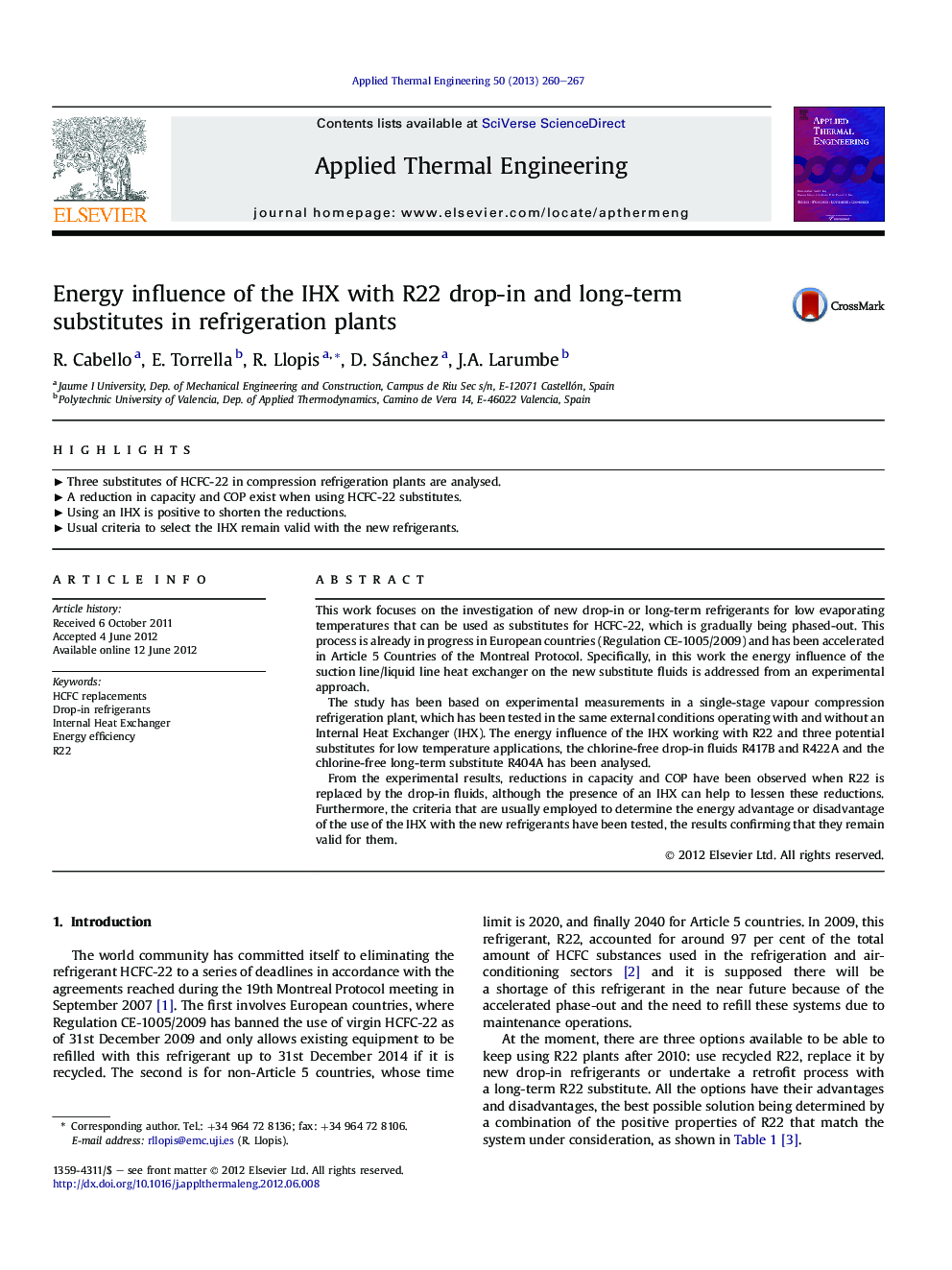| Article ID | Journal | Published Year | Pages | File Type |
|---|---|---|---|---|
| 647239 | Applied Thermal Engineering | 2013 | 8 Pages |
This work focuses on the investigation of new drop-in or long-term refrigerants for low evaporating temperatures that can be used as substitutes for HCFC-22, which is gradually being phased-out. This process is already in progress in European countries (Regulation CE-1005/2009) and has been accelerated in Article 5 Countries of the Montreal Protocol. Specifically, in this work the energy influence of the suction line/liquid line heat exchanger on the new substitute fluids is addressed from an experimental approach.The study has been based on experimental measurements in a single-stage vapour compression refrigeration plant, which has been tested in the same external conditions operating with and without an Internal Heat Exchanger (IHX). The energy influence of the IHX working with R22 and three potential substitutes for low temperature applications, the chlorine-free drop-in fluids R417B and R422A and the chlorine-free long-term substitute R404A has been analysed.From the experimental results, reductions in capacity and COP have been observed when R22 is replaced by the drop-in fluids, although the presence of an IHX can help to lessen these reductions. Furthermore, the criteria that are usually employed to determine the energy advantage or disadvantage of the use of the IHX with the new refrigerants have been tested, the results confirming that they remain valid for them.
► Three substitutes of HCFC-22 in compression refrigeration plants are analysed. ► A reduction in capacity and COP exist when using HCFC-22 substitutes. ► Using an IHX is positive to shorten the reductions. ► Usual criteria to select the IHX remain valid with the new refrigerants.
